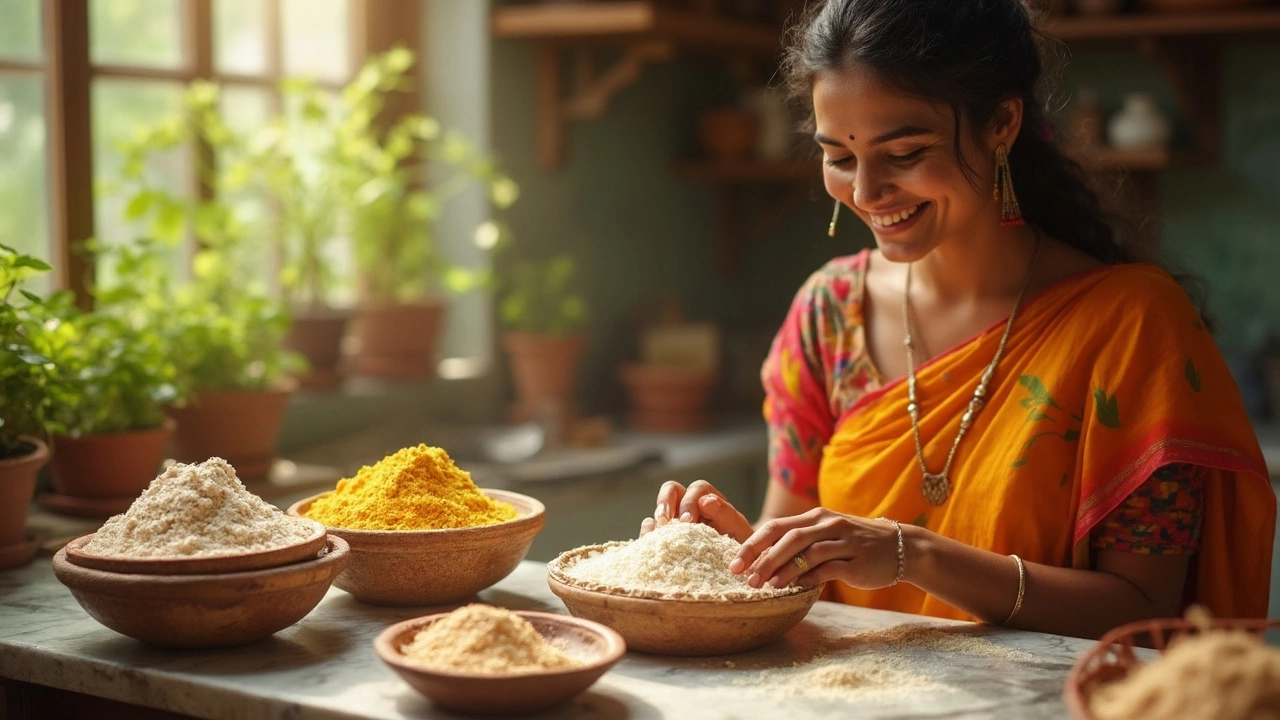Gluten in Roti: What Every Home Cook Should Know
Roti is a staple on many Indian tables, but if you’re watching gluten, you probably wonder how it fits into your diet. The short answer: traditional roti is made from wheat flour, so it does contain gluten. That gluten gives the dough its stretchiness and helps the roti puff up on the hot pan.
Most people eat roti made with whole‑wheat atta, which has about 10‑12% gluten. This is lower than the gluten level in bread flour (around 13‑15%) but still enough to trigger a reaction for anyone with celiac disease or a strong gluten sensitivity.
Why Gluten Matters in Roti
Gluten is a protein that can cause digestive issues for some folks. If you’ve been diagnosed with celiac disease, even a tiny amount of gluten can damage the lining of your small intestine. For those with non‑celiac gluten sensitivity, symptoms are less severe but still uncomfortable – bloating, gas, or headaches after a roti dinner.
On the flip side, gluten also gives roti its signature soft texture. That’s why completely gluten‑free versions often need a different approach to get a similar feel.
Easy Gluten‑Free Roti Swaps
Don’t give up roti just because you need to avoid gluten. You can make a satisfying gluten‑free roti using chickpea flour, rice flour, or a blend of gluten‑free flours. Here’s a quick starter recipe:
Ingredients: 1 cup chickpea flour, 2 tbsp tapioca starch, ¼ tsp salt, warm water as needed. Method: Mix the dry ingredients, add water a little at a time until you get a soft, pliable dough. Let it rest 5 minutes, then roll into small circles and cook on a hot skillet for about a minute each side.
This mix gives you a roti that’s soft enough to scoop up curries, yet completely free of gluten. If you prefer a milder taste, try a 50/50 blend of rice flour and sorghum flour – the flavor stays neutral while the texture stays flexible.
For those who don’t need a strict gluten‑free diet but want to cut down a bit, you can blend regular atta with gluten‑free flour. A 75% wheat, 25% gluten‑free mix reduces the overall gluten while still keeping the familiar taste.
Remember to let the dough rest. Resting helps the starches hydrate, which makes the roti easier to roll and less likely to tear, especially when using gluten‑free flours that tend to be more fragile.
Finally, keep an eye on your cooking surface. A non‑stick pan or a well‑seasoned cast‑iron skillet prevents the roti from sticking, which is a common issue when you switch to gluten‑free flours.
So, whether you’re managing a health condition or just curious about the gluten in your roti, you have options. Traditional wheat roti is fine for most people, but a few simple swaps let anyone enjoy this classic bread without worry.
Best Flour for Soft and Tasty Roti: Choosing the Right One for You
Unravel the secrets behind choosing the best flour for roti. Get facts, tips, and flavor comparisons so you can make mouth-watering, perfectly soft rotis every time.
